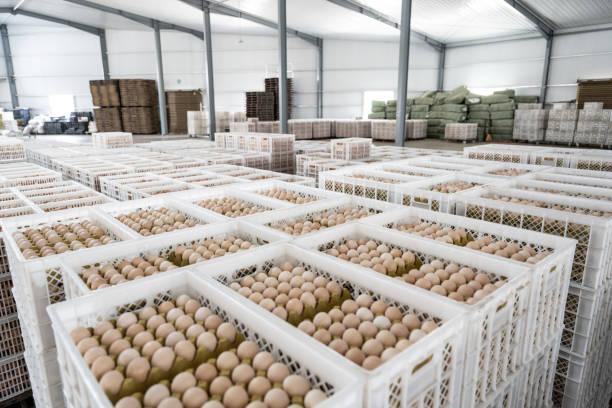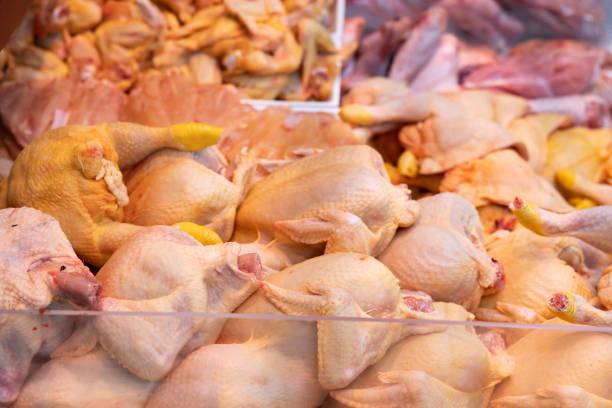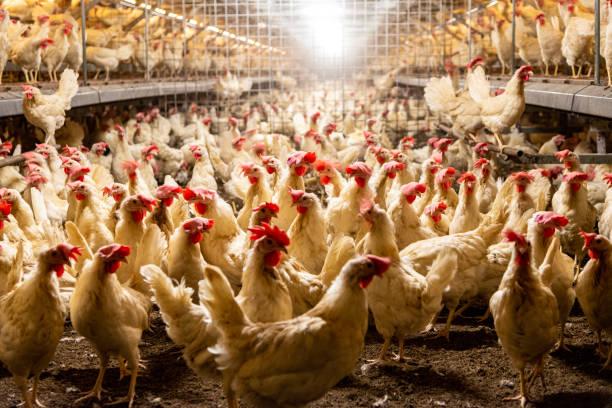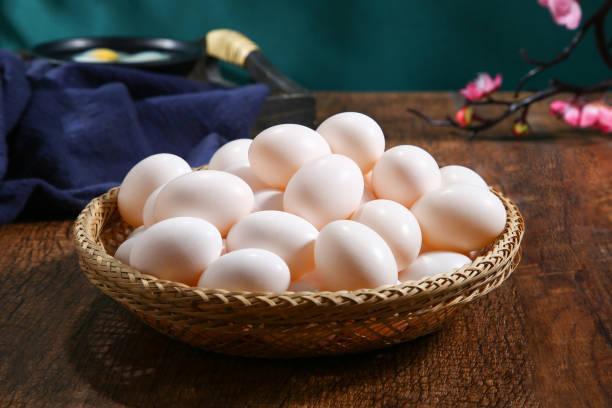Starting a poultry business is an excellent investment if all of the necessary recommendations are followed. To be profitable, you must have a well-defined business plan that includes guidelines such as market study, cost management, and efficient marketing techniques. Investing in high-quality equipment and ensuring good animal care and welfare may assist in increasing production and profitability in the long run.
In today’s fast-paced world, the agriculture business remains a critical pillar of economic growth, supplying food for the people and producing significant cash. Poultry farming is one segment of this industry that has been regularly shown to be profitable. The poultry industry not only provides a stable source of income, but it also plays an important part in satisfying the world’s expanding demand for chicken products.
The poultry business has long been an important component of the worldwide agricultural landscape and also an enriching endeavor, whether you’re a seasoned farmer or trying to diversify your financial portfolio. However, success in this industry takes hard work, knowledge, and a well-planned strategy. In this post, we will look at some of the most important variables that may help you transform your poultry company into a profitable investment.

DIFFERENCE TYPES OF POULTRY BUSINESS SYSTEM
THE INTENSIVE SYSTEM
Their intensive system is the most cost-effective and advantageous method of bird production for the industry. This technique is used to produce commercial poultry, and different types of intensive systems are used to raise poultry production, processing, and marketing to an industrial level.
These intensive systems were created as a result of farming’s evolution over millions of years under the influence of science and culture. The intensive system is the most cost-effective and advantageous method of poultry production for the industry.
Broiler chickens were the first type of commercial bird. These are the types of intensive systems for poultry farming: deep litter systems, wired floor systems, the combination of the slated system and deep litter systems, aviaries, and battery cage systems.
Deep Litter Systems
Both large-scale and small-scale commercial farming employs the deep litter system, which is very well-liked. It is significant to note that the deep litter system frequently results in a more wholesome and sustainable way of farming, which not only affects the company’s bottom line but also helps farmers achieve a generally healthier environment with fewer consequences. The system’s requirements are straightforward, and it’s simple to install and maintain.
- The sawdust is poured onto the ground in the cage
- The essence of litter is to prevent direct contact with the poultry birds on the group floor
- Bird litter density is 4 to 6 square meters
- There is easy access to the egg, feed, and water collections.
- This type of system saves more energy that will be used to clean the cage
Wired Floor Systems
The wired floor system entails building a cage to enable cross-ventilation. The wired floor system permits cross-ventilation, which allows the free flow of air inside the cage, preventing unpleasant odors in the cages and maintaining their cleanliness. When installing this floor system, preventing rats from getting into the cages and consuming the food presents a special challenge. Some of its features include the following:
- The system stocking is 6 to 8 per square meter
- The system is constructed to enable cross ventilation, which helps to easily remove chicken poop
- Because of this kind of construction system, the feeding, watering, and collection of eggs are done outside the building.
- It is a cooler house, but it is expensive and not suitable for adult birds
Combination of Slated And Deep Litter Systems
The slated system and the deep litter system have been combined in this. These techniques have several different characteristics. This leads us to the conclusion that the slatted litter method is better suited for large areas of very active poultry. It requires quick and efficient cleaning operations, whereas farmers with large-scale poultry holdings prefer the deep litter system because it requires less labor. Both systems work wonderfully together. The different traits of these techniques are as follows:
- The system is slated on each side of the wall, leaving the ground to be littered.
- Water and feed are placed in designated areas so that waste can fall on the littered ground.
- This system enables you to maintain a bird density of 5 to 7 birds per square meter
- This system is also good when you are producing broilers or eggs for hatching
- You also have drinkers and feed on litter areas too
Advantages of a slatted floor cumulus system
- More eggs are produced for hatching with this system
- Fertility is better with the combination of both than with only the deep litter method.

Aviaries
This is another non-cage system that works well for mass egg production. Because it lowers the mortality rate and improves the performance of poultry birds, it is regarded as the best aviary system. As stated below, there are primarily two types of aviaries:
Aviary Cage: It is a type of aviary made up of cages that are covered in netting and wire fencing. This type of aviary is well known for its capacity to maintain the birds’ complete ventilation. The aviary, despite its drawbacks, played a crucial role in the development of poultry production because it allowed businesses to raise their birds quickly and healthily.
Free Range Aviary: This is the second aviary, which, in contrast to cages, which are typically too small for chickens’ needs and requirements, has enough space to run around and move around freely. Aviary cages with wire flooring or cages used to maintain the total ventilation of the birds housed in them are well known for their ability to produce fertile eggs.
As most people are aware, an aviary is a place for the breeding or keeping of birds. Although there are many different types of aviaries available for raising birds, those living under the wing typically feel more relieved in cage-free or free-range aviaries than in the other two.
Battery Cage Systems
This method of poultry rearing involves dividing the cage into two or three sections. Birds in this cage are fed and given water. They have lights of their own, which in warm months keep them warm. This battery cage system is for storing high stocking densities. It is used in cage systems to increase productivity in a small space without moving the cages around or altering the hens’ living spaces for the duration of their productive lives.
Since some people prefer to conduct their animal husbandry, this cage system can also be modified for use in a home setting. The benefits of cage systems include better temperature control (steady warming of the environment) and fewer risks for chicken injuries. Also, there are minimal costs for enclosures, simple loading and unloading, lower noise and odor emissions, easier care and control of the birds, less stress in their environment, the ability to increase egg production rapidly, lower labor costs, etc.
The Advantages of Intensive Systems
- It doesn’t require a large portion of land compared to other systems of farming
- You can easily site your poultry farm very close to the market
- The system makes it easy for day-to-day management.
- The system is higher in energy and more productive because it restricts their movement
- The system helps you easily identify birds that are sick so that they can be treated.
SEMI-INTENSIVE SYSTEM
A type of system that is used on a small scale and combines both the free-range and intensive systems is called the semi-intensive system. It helps to conserve land compared to the free-range system by typically having 4 to 5 poultry per 4.5 m2 square. To function correctly in the semi-intensive system, the chickens must have a sufficiently large enclosure that is protected from other poultry structures like cages, perches, and nesting boxes.
In most cases, the enclosure is also sturdy enough to withstand periods of intense rain, which would otherwise drown the birds. The advantage of the semi-intensive system is that it helps to economize land compared to other systems, and it also helps you apply scientific management operations to this system.

EXTENSIVE OR FREE-RANGE SYSTEM
The extensive, or free-range, system uses poultry birds that are allowed to roam freely throughout the farmland. This is the oldest method of raising birds. It involves raising a small number of poultry birds—10 or more per family farm—for consumption. There are only a few chickens in this system. The practice of raising domesticated birds for their meat and eggs is referred to as “poultry farming.”
It is a capital-intensive industry, meaning that before any income from the sale of eggs, meat, chicks, etc. can be realized, all production-related costs, primarily capital outlays, must be paid. In addition, the industry produces eggs, fat, and meat. Poultry birds include domesticated ducks, guinea hens, turkeys, and others.
Broilers are chickens raised specifically for their capacity to produce meat. Despite being referred to as “layers,” the birds are raised primarily for their eggs. The systems used include those for extensive, semi-extensive, intensive, and outdoor bird farming. and more attention must be paid to ensuring that they eat enough.
The Advantages of Free-Range Systems
- It requires less capital since the birds are free to roam around
- It requires less money for feeding since the birds feed on food on the grassland.
- Most birds feed on herbs and seeds on the farmland
- The system helps to increase soil fertility as the birds’ droppings mix with the soil
- The system is perfect for farmers who own a large portion of land.
TREATMENT OF POULTRY BIRDS
Poultry birds are prone to illnesses, especially viral ones like chickenpox, bird flu, fowl cholera, Newcastle, coccidiosis, avian leukosis, chronic respiratory illnesses, and blue comb. This can be avoided by limiting the spread of any pathogen-related organisms. You can also debeak the birds to give them an extra layer of defense against cannibalism.
Medications such as amprolium, monensin, and lasalocid can treat sick poultry birds with disease. Farmers routinely maintain sterile water sources with a high chlorine content, as well as clean cages, feed, and water sources, to prevent the spread of bird flu.

FEEDS FOR POULTRY BIRDS
Four kinds of feed are given to the birds: whole grains, crumble, pellets, and mash.
Whole grains
This is composed of cracked grains and other unprocessed ingredients. The ingredients in this feed are in their natural state, which makes it nutritious for poultry birds. It provides all of the nutrition required by the poultry and helps them grow into healthy, robust chickens.
Mash
Mash is also an unprocessed feed that is consistent with ground-up grains and other ingredients. Chicks are fed primarily with commercial layer mash that contains a mix of corn, wheat, soybean meal, and sugar beet pulp, so they get the complete nutrition they need.
Pellet
These are feeds that are readily available, easy to maintain, and produce little waste. Pellets are created by grinding up components and shaping them into desired forms. This may be fed to small animals, like hens. A common type of feed used is pelleted poultry feed. Used primarily in raising broiler chickens, it consists of a dry mixture of grains such as corn and wheat.
Crumbs
These mashed pellets that have been broken are usually rough, and they are not easy to manage. Crumbs are rough food pellets. When a chicken is being fed (to increase its weight), in most cases, crumbles are used instead of pellets. The best feed for poultry birds is considered to be wheat, but you must note that grains in the right proportion should be given to the birds so that they can be healthy and perform better.
HOW TO START A PROFITABLE POULTRY BUSINESS
There are a few factors to take into consideration before beginning any poultry business. If the business is going to be successful, your goals should always be set out beforehand so that there is an overall structure for how to proceed. These factors are:
Select the Species of Birds You Want to Raise
Choosing the breed of bird you want to raise is one of the first things you should do before starting any poultry business. Do you intend to raise poultry for its meat? Or perhaps you want to raise birds so they can lay eggs. Broilers are birds raised specifically to produce meat.
Ducks, guinea hens, turkeys, and cockerels are additional poultry raised for meat. On the other hand, birds that are raised solely to lay eggs are referred to as layers. Ducks and cocks cannot be either layers or broilers, but guineas and turkeys can.
Select a Suitable Location
It would be best if you considered whether you could choose suitable farmland before starting a poultry business. The amount of farmland you choose should determine how many birds you will raise there. If you don’t have the money for a farm, you can use your backyard.
Starting small is important, but you shouldn’t stop there. Make sure the farm has enough food and water. It should also be close to a road, so you can easily transport farm products once they are ready for sale.
Provide Adequate Housing And Shelter For The Birds
Providing poultry birds with adequate housing and shelter is another thing you should be aware of before starting a poultry business. This will ensure their survival and productivity. Breeds of birds and the layout of a poultry farm determine the housing.
To allow the chickens to roam freely, housing should be built. Furthermore, it will support their ongoing health. Before starting the poultry business, you should consider this advice.
Feeding And Medication of Poultry Birds
For poultry birds, providing sufficient feed is essential. It is important to keep the feeds tidy and dry. Birds that consume wet feed may contract illnesses. Always have water available for the poultry birds. Their ability to grow will be hindered if they cannot access water. Additionally, vaccinations against all strains of the illness should be given to poultry birds.
Due to this, you must have a veterinarian examine your poultry birds to keep them from contracting the illness in any way. To prevent bacteria or viruses from infecting your poultry, you should vaccinate them.
Marketing and Sales of Your Poultry Birds
Poultry production is a very lucrative business. Instead of focusing solely on marketing once the birds are prepared for sale, make every effort to increase the quantity of poultry you sell. There are several ways you can go about it.
Go to a restaurant that needs them, a market, and hotels to find marketers and staff who need to sell and promote poultry products. If you work hard and consistently, you’ll start to make a lot of money in the poultry industry.

CONCLUSION
Finally, anyone thinking about beginning a business in commercial poultry farming should be informed of the requirements because it is a very lucrative industry. Another strategy to employ is keeping accurate financial records for your poultry business. With the help of this technique, you may conserve a sizable portion of the revenue your poultry business generates for future business expansion.
Having a solid plan for producing your birds’ food is another thing to think about. By doing this, you’ll lower your production costs and increase revenue. Products made from poultry are widely consumed worldwide and are one of the industries that help many nations’ economies expand. This is why poultry farming is seen as a comparative advantage in many countries.
I am truly thankful to the owner of this web site who has shared this fantastic piece of writing at at this place.
Thank you very much We will work very hard to give you more writings that will please our viewers’ satisfaction.